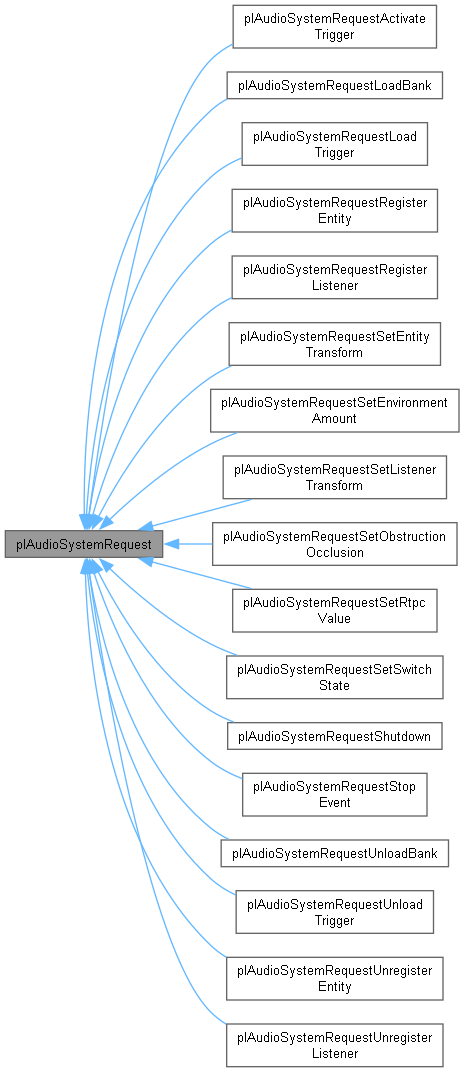 |
Plasma Engine
2.0
|
 |
Plasma Engine
2.0
|
Base class for all audio system requests. More...
#include <AudioSystemRequests.h>

Public Member Functions | |
| bool | operator== (const plAudioSystemRequest &rhs) const |
| bool | operator!= (const plAudioSystemRequest &rhs) const |
Public Attributes | |
| plAudioSystemDataID | m_uiEntityId {0} |
| The audio entity which is being manipulated, if any. | |
| plAudioSystemDataID | m_uiListenerId {0} |
| The audio listener which is being manipulated, if any. | |
| plAudioSystemDataID | m_uiObjectId {0} |
| The audio object (trigger, rtpc, environment, etc.) which is being manipulated, if any. | |
| plStatus | m_eStatus {PL_FAILURE} |
| The status of the audio request. | |
Base class for all audio system requests.
An audio request is a message sent to the audio system. It contains a type and a payload. The payload depend on the audio request purpose (load trigger, update listener, shutdown system, etc.).
To send an audio request, use the plAudioSystem::SendRequest() function. Audio requests sent this way will be executed asynchronously in the audio thread.
Each audio requests can have callbacks, this can be useful when you want to do some logic after an asynchronous audio request as been sent to the audio system. The callbacks will be executed in the main thread.
If you need to send an audio request synchronously, use the plAudioSystem::SendRequestSync() function. This will block the main thread until the request has been processed.